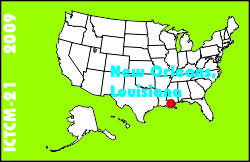
Electronic Proceedings of the Twenty-first Annual International Conference on Technology in Collegiate MathematicsNew Orleans, Louisiana, March 12-15, 2009Paper S075
| This is an electronic reprint, reproduced by permission of Pearson Education Inc. Originally appeared in the Proceedings of the Twenty-first Annual International Conference on Technology in Collegiate Mathematics, ISBN 0-321-68983-6, Copyright (C) 2010 by Pearson Education, Inc. |
Purposeful Dragging: Motivating Deeper Understanding of Functions, Domain, and Continuity through Dynamic Geometry Explorations |
| Click to access this paper:
|
Dynamic geometry software (DGS ) offers students opportunities to explore geometric ideas from a functions-oriented perspective (Kortenkamp, 1999). As students work within a DGS environment, they manipulate various objects and their attributes - measures of angles, areas of polygons, slope of lines - by clicking and dragging a computer mouse or a calculator button. As they observe the effect of dragging one object on the measures of others, they experience the function in an interactive, geometric context. Unfortunately, it is not uncommon for students with little or no geometric insight to haphazardly drag vertices to generate reasonably complete sketches of functions. In our article, we explore tasks that require purposeful dragging - tasks in which haphazard dragging produces incomplete or unproductive results for students.
With sophisticated tasks, purposeful dragging is a necessary component of productive utilization of dynamic geometry tools (Lavy and Bershadsky, 2003).
Keyword(s): geometry, software

